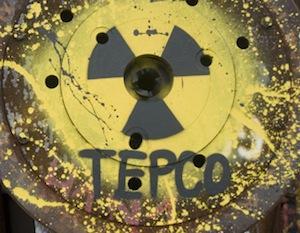
Abode of Chaos (CC by 2.0)
The Tokyo Electric Power Co.—which has been an abject failure at trying to stop leaks of radioactive water from the tsunami-ravaged Fukushima nuclear reactors—now wants to revive operations at another nuclear plant it owns.
The utility is leaking money almost as fast as Fukushima is leaking water, and says it wants to restart the Kashiwazaki-Kariwa plant to avoid having to raise consumer rates by 8.5 percent or more. But in the aftermath of the Fukushima meltdown in March 2011, it’s unclear how much of an appetite Japan has for nuclear power. As of September, all of the nation’s 50 nuclear plants were idle, though Prime Minister Shinzo Abe has said restarting the plants is crucial to the nation’s power grid, according to the BBC:
The Japanese public turned against nuclear power after the meltdowns at the Fukushima plant in 2011. Before the accident, which was caused by a massive earthquake and tsunami, nuclear plants supplied about 30% of Japan’s power. But since then the plants have been closed, either for scheduled maintenance or because of safety fears, and have not been restarted.
Japan went without nuclear power during May and June last year, but operator Kepco was allowed to restart its reactors at Ohi. The government has been under pressure to tighten safety standards to allay public fears.
Analysts say it will take around six months to clear all of the safety checks and legal hurdles involved in a restart. So far, power companies have applied to restart about a dozen of Japan’s 50 reactors.
Prime Minister Shinzo Abe wants to see the reactors back on line, as they are a vital part of his plan to turn the economy around.
Meanwhile, the leaking continues unabated at Fukushima, which also was hit earlier this month by the remnants of a typhoon. Last week, workers discovered a large crack at the bottom of one tank, through which some 300 tons of contaminated water has escaped, including radioactive cesium.
Exactly how serious a public health threat the Fukushima meltdown was, and continues to be, remains unclear. Slate took a run at trying to unravel it all last week, and concludes that the reaction to the meltdown was overblown and fueled in part by credulous media. Maybe. But then again, maybe not, according to the Physicians for Social Responsibility:
Once a large amount of radioactive cesium enters an ecosystem, it quickly becomes ubiquitous, contaminating water, soil, plants and animals. It has been detected in a large range of Japanese foodstuffs, including spinach, tea leaves, milk, beef, and freshwater fish up to 200 miles from Fukushima. Radioactive cesium bioaccumulates, bioconcentrates, and biomagnifies as it moves up the food chain. Routine ingestion of foods contaminated with so-called “low levels” of radioactive cesium has been shown to lead to its bioaccumulation in the heart and endocrine tissues, as well as in the kidneys, small intestines, pancreas, spleen and liver. This process occurs much faster in children than in adults, and children are many times more susceptible than adults to the effects of the ionizing radiation their internal organs are then exposed to.
Decontamination in the exclusion zones is proving futile. Efforts to clean up highly contaminated areas are generally failing because melting snow and rainwater run off the contaminated hills and return to recontaminate homes and land. Diversion ditches have failed to stop the process. Areas significantly contaminated with radioactive cesium and other long-lived radionuclides can no longer sell and export agricultural crops.
In addition to its effects on land, the Fukushima disaster produced the largest discharge of radioactive material into the ocean in history. Fifteen months after 733,000 curies of radioactive cesium were pumped into the Pacific, 56 percent of all fish catches off Japan were found to be contaminated with it. Fishing continues to be banned off the coast of Fukushima, where 40 percent of bottom dwelling fish (sole, halibut, cod) were recently found to have radioactive cesium levels higher than current Japanese regulatory limits.

